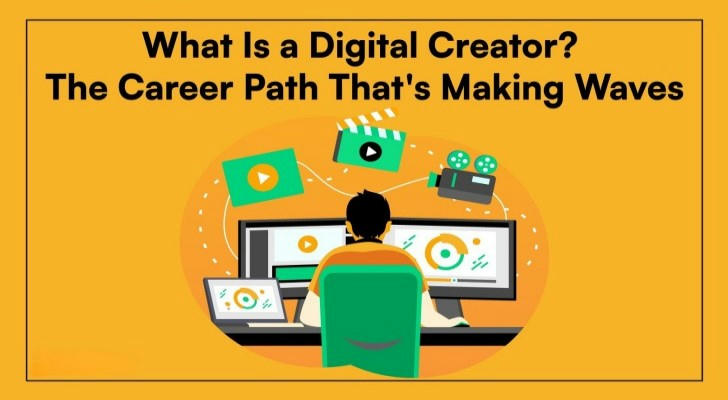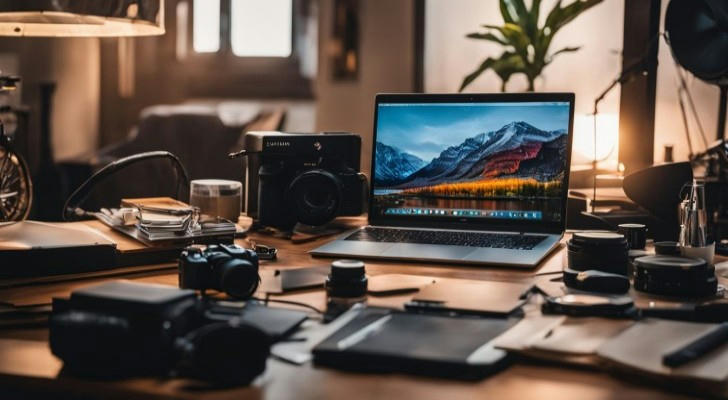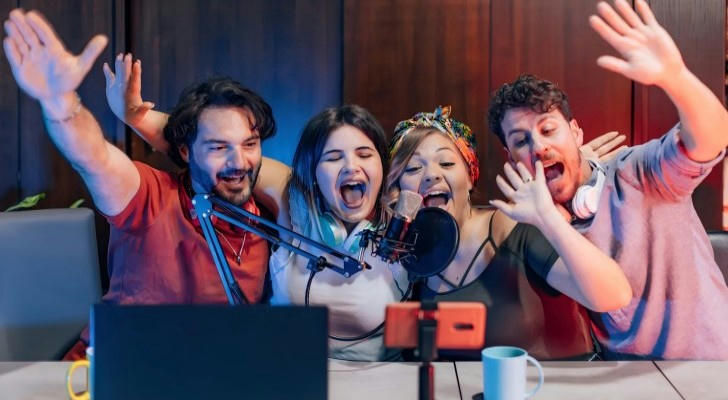Scrolling Into a New Career: What It Really Means to Be a Digital Creator
Just a decade ago, saying you wanted to become a “content creator” might’ve earned you a confused look—or a polite smile. Today, it’s a legitimate career path, and one that’s growing fast. But what does it actually mean to be a digital creator, and why are so many people—from students to retirees—getting involved?
Let’s break it down, using real numbers and relatable examples, to understand how content creation is shaping the modern work landscape.

The Rise of the Digital Creator Economy
According to a 2023 report from Adobe, over 165 million people worldwide now consider themselves digital creators. In the U.S. alone, around 23% of Gen Z and 17% of Millennials say they’ve earned income from content they’ve created online.
It’s not just about going viral or becoming a YouTube star. The modern creator economy includes everything from people who blog in their spare time, to photographers selling prints online, to nurses sharing health tips on TikTok. In fact, a study by Linktree revealed that more than 45% of full-time creators work solo—without big teams or brand deals—often from home, on flexible schedules.
So why is this field becoming so popular?
Why More People Are Creating Content
Three main reasons explain the digital content boom:
• Low barrier to entry: All you need is a smartphone and a little curiosity. You don’t need a film crew or marketing degree to get started.
• Creative freedom: Content creation allows people to share what they love, from cooking tips to gaming tricks to daily life updates, in their own way.
• New income possibilities: Many see it as a way to build side income—or even a new full-time career—by doing something meaningful.
Importantly, the appeal stretches across age groups. While young adults dominate platforms like TikTok and Twitch, older adults are thriving too. According to Pew Research, over 50% of U.S. adults aged 50 and older now use YouTube regularly, and many have started creating content of their own.
What Do Digital Creators Actually Do?

At its core, a digital creator shares original content online. That could mean:
• Making videos for YouTube
• Sharing product reviews on Instagram
• Recording podcasts
• Writing articles or newsletters
• Teaching a skill on TikTok or LinkedIn
But content creation isn’t just posting pretty pictures. It also involves planning topics, understanding audiences, editing videos or writing captions, and sometimes managing comments or emails. That’s why many creators say the job feels more like running a small business.
What You Can Gain (Beyond Views and Likes)
While some creators chase fame, most are in it for personal or professional growth. Here’s what many creators report gaining from their work:
1. Real-world skills
Creating content teaches you how to communicate clearly, solve problems, and use digital tools. The World Economic Forum lists creativity, communication, and self-management as top future job skills—exactly the areas digital creators strengthen daily.
2. Confidence and expression
It’s one thing to talk about your ideas in a group. It’s another to put them out into the world. Many creators say the experience builds confidence, especially when their voice resonates with others.
3. Connections and community
From niche online forums to global Instagram audiences, creators often build tight-knit communities around shared interests. These digital “tribes” offer support, feedback, and even friendship.
4. Career opportunities
Even if you don’t plan to be a full-time influencer, your content can act as a digital resume. Recruiters often check social media, and having a public body of work shows initiative, creativity, and dedication.
But It’s Not All Smooth Sailing
With all the upside, content creation still has its challenges. A survey from Patreon in 2022 found that over 60% of creators worry about burnout, while many struggle to maintain balance when turning hobbies into work.
Common challenges include:
• Keeping up with trends
• Dealing with negative feedback
• Pressure to post regularly
• Uncertainty around income or growth
That’s why many creators recommend starting small and setting clear goals—whether that’s building a following, practicing storytelling, or simply enjoying the process.
How to Get Started (Even If You’re Not a Tech Person)
You don’t need a media degree or high-end gear. Many successful creators start with nothing but curiosity. Here’s how to ease in:
• Pick one platform you already enjoy—like YouTube, Instagram, or TikTok—and get familiar with it as a user before becoming a creator.
• Start with a topic you know. Whether it’s pet care, organizing tips, or local history, your personal experience is your best content fuel.
• Don’t aim for perfection. First posts often look rough—it’s part of the learning curve. Progress beats polish.
• Engage with others. Comment, collaborate, ask questions. The more social you are online, the faster you’ll grow.
Think of it like gardening: plant a few seeds, water them consistently, and give them time to grow.
The Bottom Line
Becoming a digital creator isn’t about chasing internet fame. It’s about taking control of your voice and building something that reflects your passions, skills, and ideas.

Whether you’re 19 or 59, content creation can be a creative outlet, a learning journey, or a bridge to new opportunities. And with more people than ever looking to create, connect, and grow online, there’s never been a better time to join the conversation.
So if you’ve got something to say—or just something to try—grab your phone and hit “record.” The digital world is listening.
